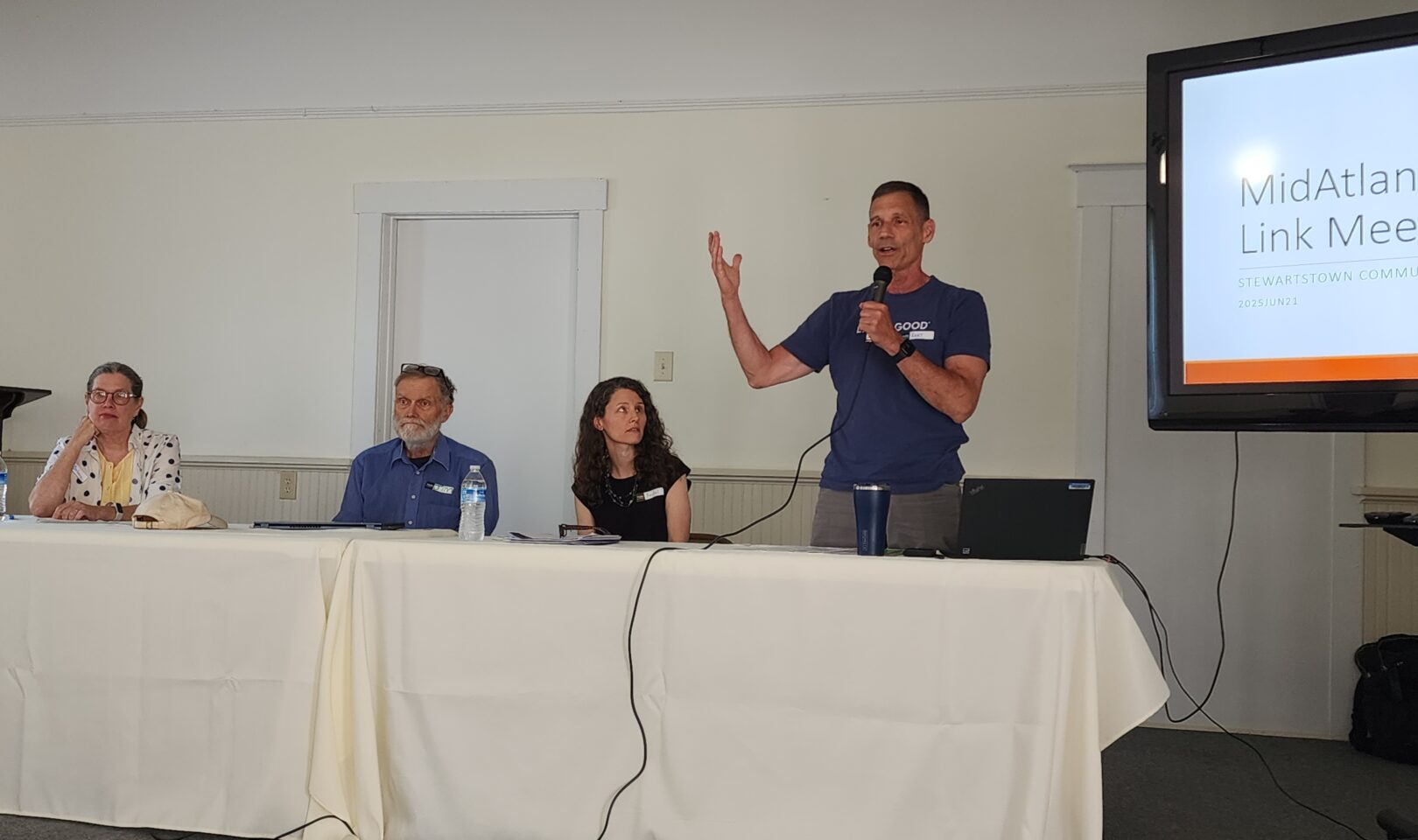Stewartstown-area residents gathered at the community building Saturday afternoon to learn about and share their concerns about the NextEra Energy Transmission MidAtlantic Resiliency Link project.
“This is a raising local awareness effort here today,” said Kent Hunter, who lives on the next hill over from the community center. “We probably can’t stop this but we can maybe impact where the route eventually ends up.”
MARL, as it’s called, is a proposed transmission project to build a new 105-mile 500-kilovolt transmission line stretching from Greene County, Pa., to Frederick County, Va. Depending on the route selected, it could pass through Monongalia and Preston counties, along with Hampshire County and Mineral counties, Allegany Garrett county in Maryland and Fayette County in Pennsylvania.
The project also consists of building a new 500/138-kV substation in Frederick County, Va.
Hunter was one of four speakers to address the residents. He said he learned about MARL in December after NextEra met with the Monongalia County Commission. He was among the landowners on the possible local routes who received a postcard from NextEra in February. Concerned, he contacted former Delegate Barbara Evans Fleischauer and Delegate Evan Hansen, and they got involved in the awareness-and-opposition effort.
Among the concerns Hunter and others cited is, who pays for this. “It just takes away our land,” he said. “It doesn’t help us in any way at all that we can find.” And it will likely decrease property values of those whose land it crosses.
At a May open house, NextEra’s Kaitlin McCormick answered a question from The Dominion Post about the expected local benefits. She cited three: reliable power; the opportunity for high-demand customers to interconnect; and local tax revenue – $50 million to $100 million over the 40-year life of the project.
Residents remain skeptical, though. Speakers several times cited a study by Cathy Kunkel, energy consultant at the Institute for Energy Economics and Financial Analysis, that indicates West Virginia ratepayers will pay more than $440 million in increased electricity rates over the next 40 years for MARL and the related Valley Link Transmission line that is planned to run from the John Amos plant in Putnam County eastward to Frederick County, Md.
PJM Interconnection, the regional 13-state power grid operator, selected MARL and Valley Link, among a number of projects, based on its long-range Regional Transmission Expansion Plan, to address reliability issues associated with loss of power generation sources, support for new power sources and additional electricity demand in the region.
Public perception – echoed in Kunkel’s report – ties much of that new demand to data centers in Virginia.
Fleischauer, one of the speakers, said there’s not enough local benefit to justify the rate hikes. “We don’t see the value in being a pass through.”
Speaker Rachel Stevens, who lives just north of Bruceton Mills and whose neighbors are on a potential route, listed several areas of concern about the line. Along with diminished property values and higher electric bills, she cited possible environmental impacts along the route and the impacts on landowners who will be subject to possible eminent domain proceedings for the line’s 200-foot right of way.
Speaker Jim Kotcon, a retired WVU professor, explained some of the process ahead. After selecting a route, NextEra is looking to file applications with the state Public Service Commission and other state’s regulators early this fall. A project timeline shows expected state regulatory approvals in spring 2027, start of construction in fall 2029, completion by fall 2031 and lines in service by winter 2031.
PSC has 270 days from NextEra’s application date to grant or deny approval, he said, and any eminent domain proceedings to gain access to land would begin after that.
He suggested four strategies to respond: take the best possible offer for the right of way (but don’t be the first to agree because they get the worst offers); work to get the line moved to another route; make sure the line avoids public lands (though this would affect more private landowners); or simply just oppose the line.
Fleischauer continued that line of thought. “There’s hope that we can do something about this,” she said. The key fight will be when the PSC is considering approval. And “not in my back yard” won’t sway them. They will need clear evidence that the line won’t benefit West Virginia.
During a public Q&A session, residents cited some other concerns, including the effects on Cheat Lake recreation and business with new, big, unsightly power lines passing overhead. One lakeside landowner said, “It’s very disturbing.”
There was a general understanding that landowners along all the proposed routes aren’t going to want the line in their yards and will be opposing it.
Fleischauer said, “If we are going to succeed, we are going to have to make the most noise.”
Another community informational meeting is set for 1 p.m. June 29 at Rexroad Auction in Bruceton Mills.


